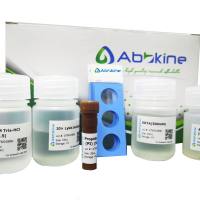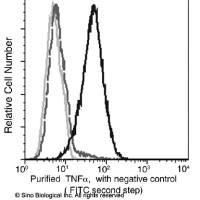Extraction Of DNA From Mouse Tails, A Simpler Method
互联网
855
This method for the simplified purification of mouse DNA is based upon an article entitled �Simplified mammalian DNA isolation procedure� by Peter W. Laird from Nuclei Acids Research, Vol. 19, No. 15, page 4293.
This method is much simpler and thus faster than the other method for DNA purification in this wiki (uses phenol/chloroform extractions). However, the purity of the DNA derived from this isolation procedure is greatly reduced compared to the DNA isolated from the more common phenol/ chloroform extraction procedure. Therefore, one must make sure to use the appropriate DNA isolation method depending on how the DNA will be used. Ask if unsure.
Approx. time: 1/2 hour depending on the # of tails to be cut.
1. Cut mice when they are 8 to 12 days old. Cut 1-1.5 cm of tail and place it in a 1.5 ml microfuge tube. The mice do not have teeth at this point and therefore will not bite. Hold the mouse firmly by the back of his neck and the tail between the pinky and ring finger to prevent the mouse from moving around a lot. Be sure to use sharp scissors so the cut will be clean and done quickly.
2. Add 400 µl of the proteinase K lysis buffer to the tail in the eppendorf tube. The buffer consists of 100 mM Tris-HCl pH 8.5, 5 mM EDTA, 0.2% SDS, and 200 mM NaCl.
3. Next add 20 µl Proteinase K @ 10 mg/ml. Make sure that the Proteinase K is completely melted before adding it to the sample.
4. Incubate the microfuge tube(s) at ~55 °C overnight on a rotator located on the sixth floor. If the tail is not completely dissolved the next day add about 10 µl of 10 mg/ml proteinase K to the microfuge tube and allow tube(s) to rotate for a couple more hours until the tail is completely dissolved.
From this point on gloves should be worn at all times and great care must be taken to prevent any of the DNA from being contaminated or mixed up.
5. Remove the tubes from the rotator and spin the microfuge tubes down for 3 to 4 min at the highest speed @ room temperature to allow the hair to form into a pellet. Pour off the supernatant into a new 1.5 ml microfuge tube. (Discard old tube only when one is sure that one has the DNA out of the tube.)
6. Add 500 µl of 100% isopropanol.
7. Gently shake the tube(s) until the DNA clump is seen suspended in the isopropanol.
8. Centrifuge for 3 to 5 min. at the highest speed @ room temperature.
9. Pour off the isopropanol. Be careful not to disturb the DNA which is the pellet at the bottom of the tube.
10. Pulse spin (5 sec) the tube(s) to make all the isopropanol drops accumulate at the bottom of the tube(s).
11. Aspirate the isopropanol using the smallest pipetman. Make sure that the DNA is not mistakenly removed with the isopropanol!
12. Air dry the DNA for 1 min. (to do this just leave the top of the eppendorf tube open after one has aspirated the isopropanol; as one moves on and does the other tubes, the DNA will dry sufficiently by the time one is ready to add the SDDW).
13. Add 100 µl to 200 µl of SDDW and place the tubes on the appropriate shelf in the 4?C tissue culture refrigerator (the door on the right).









